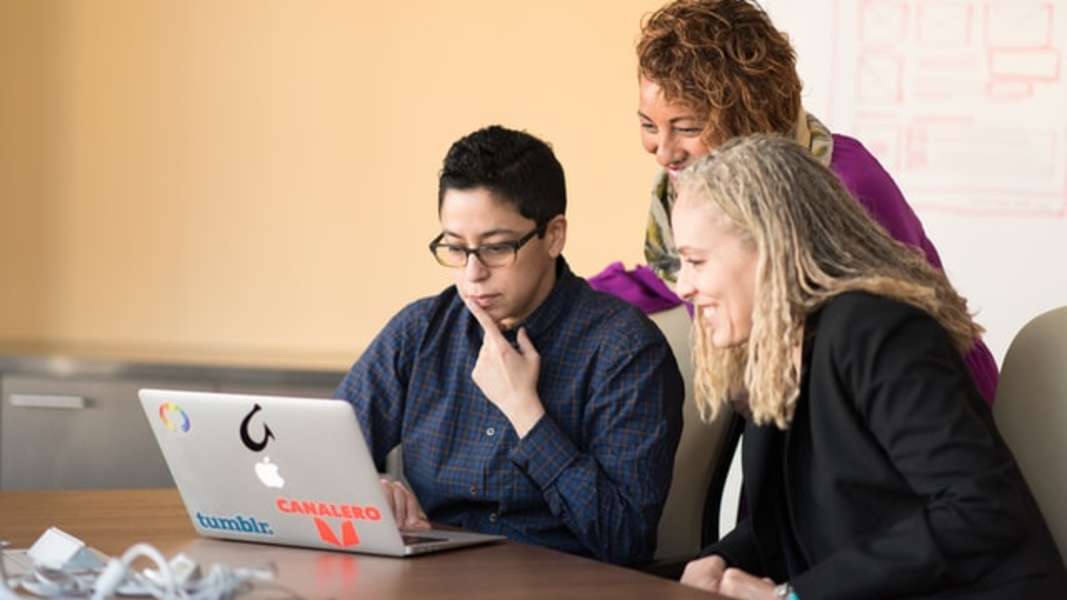Cognitive diversity within the workplace benefits organisations on multiple levels: from operational processes to the functioning of the workforce itself, which all impact success and growth. Employing individuals with varying degrees of expertise allows the organisation to function more efficiently and brings different perspectives to the table.
Ultimately, the mix of skill sets and expertise from a cognitively diverse team can make your company more innovative, and creative, and help improve problem-solving.
What is cognitive diversity?
Cognitive diversity is the inclusion of people with different characteristics within a workforce, including different personality traits, skills, and work styles. Cognitive diversity has been defined as bringing together people with different perspectives, thought patterns, and ideas. It can be used as part of a wider diversity and inclusion workplace strategy.
Every individual has their own life experiences, background, and culture that form their view of the world and the way they approach a problem or situation. Bringing together a cognitively diverse range of people invites new ideas and fresh perspectives.
When employees feel heard and valued in this way, they are more likely to contribute and feel safe to make suggestions and explore ideas. In contrast, a homogenous group of people with similar backgrounds and experiences may use similar thought processes and approaches to their work, reducing the chance of sparking inspiration and innovation.
How can you increase cognitive diversity?
Increasing cognitive diversity can be an effective technique to bring about fresh practice and improved processes within a company.
One of the easiest ways to introduce cognitive diversity to the workforce is by hiring new employees. When you are looking to recruit, start with assessing the people in your existing team. What are their cultural, educational, and personal backgrounds? How does this influence their thinking around problem-solving or innovation?
Actively recruiting people different from your existing employees can help create a rounded team of cognitively diverse employees.
Aside from recruiting new staff to create a cognitively diverse team, innovative mindsets, skills, and expertise can also be drawn out of existing employees and developed. If you can show your employees that innovative thinking and new approaches are welcome, you may find that ideas and innovation come from unexpected places.
Never underestimate the impact of "that's how it's always been done" to discourage people from sharing new ideas. It may seem counterintuitive to encourage differences of opinions and approaches within a workforce, but when handled correctly, these differences can inspire a team, rather than cause conflict.
Benefits of cognitive diversity
Cognitive diversity has multiple benefits: for the employees themselves, the wider team, and the whole company.
How many good ideas are left unsaid because an individual feels that their opinion is not valued? Not having the freedom to express new ideas means the employee feels unappreciated and unimportant, the team loses out on potential growth and innovation, and the company becomes stagnant.
As an employer, you may be surprised at how one workplace situation can provoke such a range of responses and suggestions from a cognitively diverse team. Rather than fearing conflict or divides due to differences within the team, welcoming personal viewpoints open up possibilities for better problem-solving.
Employees who recognise that different ways of thinking are valued by their employer can feel motivated to contribute their own opinions, ideas, and judgements, inspiring a sense of integration and contribution.
Situations that demand constructive problem-solving skills and creative outlooks are met with multiple skills and perspectives from a cognitively diverse team, allowing the organisation to work more efficiently and effectively, driven by a fulfilled and productive workforce.
Examples of cognitive diversity
Cognitive diversity comes in many different forms, such as personality traits, intellect, skills, and working styles. Personality traits can include both logical and emotional characteristics that influence an employee's behaviour in a workplace situation.
While logic-minded employees have tendencies to support their judgement and ideas with data and evidence, employees who function within their emotional judgement may provide their opinions with principles and values in mind. A combination of these traits can work well together when forming and developing ideas.
Similarly, different skill sets also bring balance to a workplace environment. Employees with a greater grasp of numerical data will be prone to view situations more systematically. Employees with greater communication skills might approach these same dilemmas in a more creative, innovative way. These skills can work well together as they reinforce and support one another.
Create a cognitively diverse team
A cognitively diverse team brings fresh ideas that can drive innovation and change. This, in turn, contributes to an organisation's achievements, allowing it to grow in efficiency and performance.
Having employees who know that their contribution is welcome and assumed to be worthwhile and productive helps eliminate 'groupthink'. The ultimate aim of a cognitively diverse team is to create movement and momentum that facilitates the growth and success of a company that may otherwise fall behind its competitors.
Testing for cognitive diversity
When measuring cognitive diversity at the recruitment stage, psychometric testing can be a valuable tool in assessing the thought processes and approaches of each individual. Situational judgement tests, in particular, are specifically designed to assess how a person reacts and responds to various realistic workplace scenarios.
In a situational judgement test, the candidate is presented with a possible work situation and must choose their most likely response from a choice of answers. The results give an insight into the behaviours and actions that can strongly influence the person's ability to contribute to your existing team.
Your strategy may be to hire someone who reacts very differently to your existing employees, with an aim of introducing a new perspective. The situational judgement test can be used alongside other psychometric and personality tests to give a clearer representation of what that candidate can offer to the role. The use of objective testing also eliminates unconscious interviewer bias and ensures fair and equal opportunities to applicants, regardless of their defining characteristics such as age, sex, and race.
Within an existing workforce, employers and leaders will find one of the most effective methods of testing cognitive diversity to be communication. Interacting and getting to understand employees on an individual basis can give valuable insight to them as people, both on a personal level and within their professional role. Understanding your employees helps you to organise your workforce more strategically, reconsidering and redistributing roles and positions where necessary.








